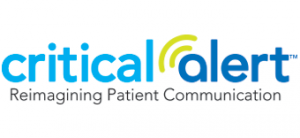Impacts of technology on the nurse call industry
by Kourtney Govro
Going back to school to pursue my PhD at 40sih was a little bit harder in some ways than when I was in my undergrad 18. However, in a lot of ways it is a whole lot easier. 20 years ago carrying books was like a trip to the gym. Books are heavy, and much to the librarians terror prone to having coffee spilled on them. While I did have a computer to type papers on, search tools and other enhancements were limited. Today the digital library, citation management software, text searches, and overall databases blow my mind.
Sometimes when I walk into a hospital, it feels like I am walking back into my college 20+ years ago. There is technology – I mean I had access to a computer lab or internet café and a cell phone in a bag. That technology was a precursor of today, and compared to the advancements available seems archaic.
Nurse call has had some improvement in 40 years. It uses LED lights instead of light bulbs. It has three buttons instead of one big red button. It has expensive software that allows it to connect a SIP call to a device. Impacts of technology on the nurse call industry have been lack luster to say the least. A lot of it is still archaic like most systems wiring still resembles Christmas tree lights where one goes out they all go out. I contend that part of the lack of innovation is tied to the barrier to entry within the regulatory bodies like those put forth in the UL1069 standard that addresses life safety systems. While it is important to create safety standards, we always need to be looking ahead. Myself and a number of other thought leaders would agree that electronics based enhancements are the worst way to drive change in the healthcare communications industry. Electronics take a long time to design, prototype, test, gain validation, and bring to market. This isn’t a dig against the manufacturers, but at the industry as a whole. Additionally, an electronics based nurse call system is one that is dependent on a singular electronic manufactured device family. So if you buy one brand of nurse call then you have to stick with that brand throughout your construction to have similar experience across the hospital or health system. In some cases you have to even purchase the same model.
How does one avoid this? Ask good questions and make informed decisions.
- Does your nurse call system have backwards compatibility to all previous models? Going forward, how long will the operating system software work with the old or current model releases?
- If I have a mixture of manufactures will your operating system work with all of them, some of them, or any of them?
- What is your organizations technology roadmap and what percentage of the R&D budget is allocated for new hardware technology? How will that roadmap drive mobility and flexibility?
- How much does your software cost on-going? What are the ongoing costs associated with the software?
Technology offers incredible flexibility. The last paper I wrote took half the time because of the digital library and citation tools. I was able to access it on any PC, my iPhone, and my iPad. We should have higher expectations for our technology in hospitals for patient communication tools. Reach out today to find out more about how Critical Alert can help your hospital reach your technology goals.
Kourtney Govro
Strategic Advisor
Kourtney Govro has over 20 years of experience in the nurse call business. At just 6 years old she was introduced to the idea when her father became a nurse call distributor. Since then, her love for transforming the nurse call industry has continued to grow. Leading her to start her own successful company, Sphere3, a consulting company that supported hospitals with decisions around leveraging technology to transform the care environment. Critical Alert acquired Sphere3 in 2019 and Kourtney joined the team as a Strategic Advisor.


